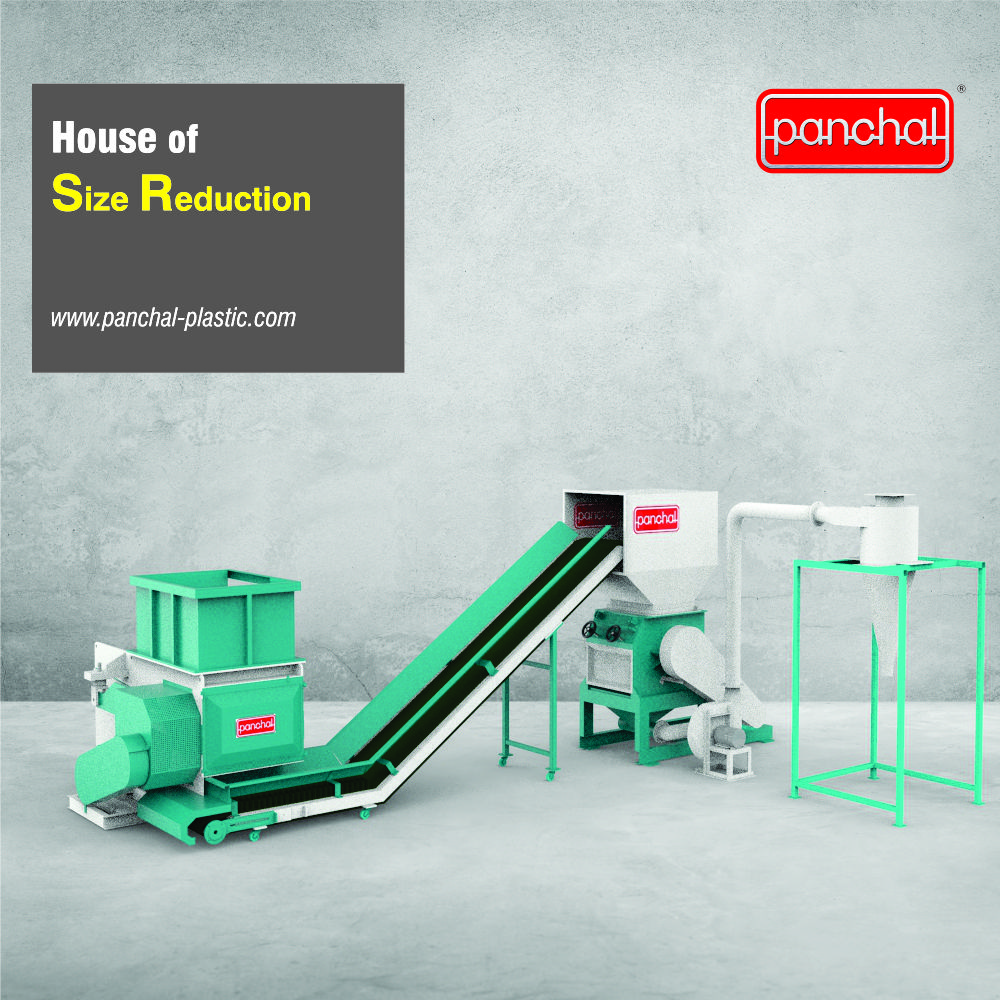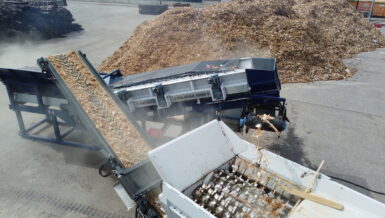Since shredders are designed for specific material types and sizes, their cost correlates not only with their power but also with the maximum size of material to be shredded. So, when shredding large tires or oversize scrap is necessary, an initial size reduction step with a separate shear system is often the solution. The concept is simple: reduce the material to a more manageable size, and then process it through more affordable, small and midsized shredders. This lowers operating costs and eliminates the need to transport bulky or long items intact to other locations for shredding.
To this end, portable, gas-powered, hydraulic alligator shears have been developed that can quickly cut oversized tires, building materials, sheet metal, wood, and plastic into smaller pieces so they can be shredded, or hauled away to landfills.
Alligator shears are critical tools to have on hand when the size, shape, or composition of a material requires initial size reduction before shredding. As a type of shearing machine, alligator shears are characterized by the hinged opening of the cutting blades which creates a tight shear action when hydraulically closed.
Although alligator shears are well established in the recycling industry, most are stationary. When designed to be portable, however, alligator shears can be towed to any site for initial size reduction, so material does not have to be transported elsewhere for that step.
A portable platform allows the initial size reduction to be performed onsite, instead of first transporting the oversize material to a stationary shear located elsewhere, and then possibly having to transport it again for final shredding.
One major application for alligator shears is tire recycling to reduce the oversized tires found on semis, passenger trucks, or construction vehicles. Recyclers often avoid processing oversized tires if they are too large to shred. In doing so, however, they miss out on profitable disposal fees as well as the sales value of reclaimable scrap such as rubber compounds, steel wire, and synthetic or natural fibers.
When recyclers cannot shred larger tires, they shy away from what can be a lucrative revenue source. Since many tires and materials are too large to be easily transported, portable equipment can cut the tire down to size onsite so it can be processed by a more affordable sized shredder.
There was a need for a large portable alligator shear in the market, so we designed and manufactured a lightweight, towable system at the request of some of our recycling customers.
For tire recycling, the unit’s 26.5 HP hydraulic drive provides the power to automatically lift tires onto a mobile platform and shear them into more manageable sized pieces. This enables easy shearing with minimal lifting and/or manual handling. When dealing with 100–150-pound tires, equipment is needed to lift the tire onto the platform before it is sheared.
The gas-powered, portable shear needs only one person to operate it, freeing recycling staff to tend to other tasks. To increase safety, the shear requires the use of two hands, ensuring the equipment activates only when the operator is ready. With two-handed control, recyclers eliminate the possibility of the operator getting a hand in the way since it cannot be actuated with one hand.
Besides tires, the alligator shear can be used to cut to size a wide variety of materials that must be divided into pieces before being fed into a shredder. The shear is designed to be versatile so can be used on anything like building materials, sheet metal, and wood or plastic items that need to be cut before being shredded or further processed. The idea is to broaden the range of materials that recyclers can profitably process into saleable scrap.
The alligator shear completes BCA’s line of recycling and tire processing products that reduce the size of materials into salable scrap from start to finish. This includes portable alligator shears, stationary/portable shredders, portable sidewall removers, tread cutters, conveyors, magnetic separators, and vibratory, disc or trommel screens.

























